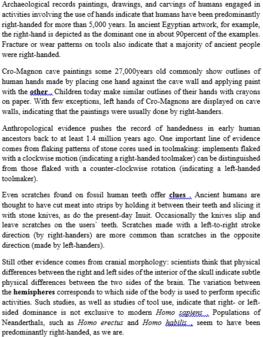Read the following passage and mark the letter A, B, C, or D on your answer sheet to indicate the correct answer to each of the following questions
The dream of a canal across the Isthmus of Suez had existed since the time 4,000 years ago when the pharaohs built Egypt's first canal. (It linked the Nile River with the Great Bitter Lake, which then opened onto the Gulf of Suez.) This canal, however, was filled in, and for centuries trade with the Far East was carried overland across Asia. Eventually ships began to sail around the southern tip of Africa to reach the Mediterranean Sea from the Red Sea.
Then in 1858 a French engineer, Ferdinand de Lesseps, acquired the rights from his friend, Said Pasha, viceroy of Egypt, to organize a company and build a canal. On November 17, 1869, the Suez Canal was opened with great ceremony at the northern terminus, Port Said, which was named for Said Pasha. The 12,400-mile (19,950-kilometer) voyage from London around South Africa to Bombay, India, was shortened to 7,250 miles (11,670 kilometers).
The Suez Canal is 101 miles (163 kilometers) long, or about twice the length of the Panama Canal. The Suez was easier to construct because it crosses flat, sea-level terrain and requires no locks. About 24 miles (39 kilometers) of the canal are channels dredged through lakes. Most of the banks of the other 77 miles (123 kilometers) are reinforced with stone, cement, or steel to help prevent erosion.
The main channels of the canal are dredged to a depth of about 66 feet (20 meters), and the navigational width between buoys is set at 596 feet (180 meters). Double channels, where ships traveling in opposite directions can pass without stopping, have been constructed at four locations and cover a little more than 41 miles (67 kilometers). The largest ships allowed to pass through the canal may have a beam of up to 210 feet (64 meters) wide and a draught (belowwater depth) of up to 53 feet (16 meters).
Ships move through the canal under their own power, but large ships must be accompanied by a tugboat. The trip takes roughly 12 to 18 hours. To prevent accidents, vessels must travel in convoys at fixed speeds, fixed intervals and fixed distances between passing ships. Convoys going in opposite directions are usually timed so they will pass each other in the Great Bitter Lake where there is a long double channel.
Each day two convoys from south to north and one convoy from north to south sail through the canal, with a maximum total of 80 vessels a day. Yearly traffic numbers about 20,000 ships carrying between 300 million and 400 million net tons. Tankers and cargo ships account for nearly all canal traffic, but occasionally passenger liners and warships use the waterway. Northbound cargo is chiefly oil from the Persian Gulf headed for Western Europe. Southbound cargo consists mainly of manufactured goods and grain from Europe and North America destined for the Far East and southern Asia.
Which of the following is not surely true of Ferdinand de Lesseps?
A. He named Port Said after his friend’s name.
B. He worked in engineering
C. He came from France
D. He and his company built the Canal.


Đáp án D.
Ferdinand de Lesseps và bạn của anh đã lập ra một công ty và xây nên kênh đào (a French engineer, Ferdinand de Lesseps, acquired the rights from his friend, Said Pasha, viceroy of Egypt, to organize a company and build a canal.) không chắc chắn là anh ta và công ty anh ta xây